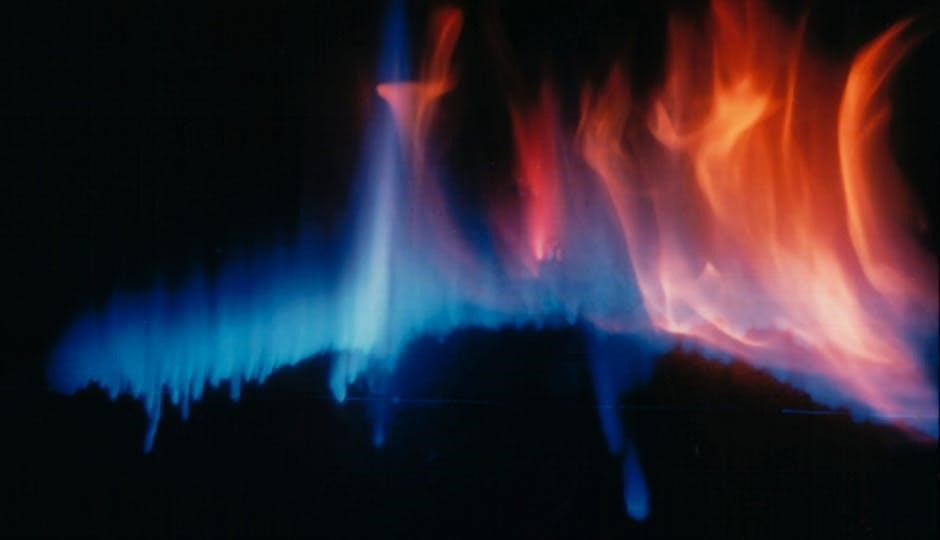light bulb color temperature guide
Light bulb color temperature, measured in Kelvin, defines the color and warmth of light, impacting ambiance, mood, and visual comfort. It ranges from warm tones (low Kelvin) to cool tones (high Kelvin), influencing both residential and commercial spaces. Understanding this guide helps in selecting bulbs that enhance decor and functionality, ensuring optimal lighting for various needs while maintaining energy efficiency.
What is Color Temperature?
Color temperature, measured in Kelvin (K), describes the color and warmth of light emitted by a bulb. Lower Kelvin values (e.g., 2700K-3000K) produce warm, yellowish tones, while higher values (e.g., 5000K-6500K) result in cool, bluish light. This measurement correlates with the temperature of a blackbody radiator, where light color changes as heat increases. It impacts ambiance, mood, and visual comfort, making it a critical factor in lighting design. Understanding color temperature helps in selecting bulbs that align with specific lighting needs, whether for residential, commercial, or outdoor use, ensuring the right aesthetic and functional lighting for any space.
Why is Color Temperature Important?
Color temperature significantly impacts the ambiance, mood, and functionality of a space. It influences how colors appear and affects human emotions, with warm tones creating relaxation and cool tones enhancing focus. Proper color temperature selection ensures visual comfort, reducing eye strain and improving task performance. It also plays a role in energy efficiency, as certain temperatures correlate with specific light sources like LEDs, which offer longevity and lower energy consumption. Choosing the right color temperature balances aesthetics and functionality, making it essential for both residential and commercial lighting designs to create desired atmospheres and meet specific lighting needs effectively.

Understanding the Color Temperature Scale
The color temperature scale, measured in Kelvin (K), ranges from warm white (2700K-3000K) to cool tones (5000K+). It guides bulb selection for desired lighting effects and ambiance.
Warm White (2700K-3000K)

Warm white light, ranging from 2700K to 3000K, offers a soft, yellowish glow reminiscent of traditional incandescent bulbs. It creates a cozy and intimate atmosphere, ideal for living rooms, dining areas, and bedrooms. This warm tone is gentle on the eyes and complements wooden furniture and warm interior decor. Perfect for spaces where relaxation is key, warm white bulbs enhance ambiance without harsh brightness, making them a popular choice for homes seeking a welcoming environment.
Soft White (3000K-3500K)
Soft White, within the 3000K-3500K range, provides a gentle, slightly brighter alternative to Warm White while maintaining a warm, inviting ambiance. This color temperature is ideal for spaces requiring a balance between comfort and visibility, such as kitchens, living areas, and bathrooms. It minimizes harshness, offering a calm environment and complementing soft interiors. LEDs in this range are energy-efficient, making them a practical choice for everyday lighting needs without sacrificing the warmth and coziness expected in residential settings.
Bright White (3500K-4100K)
Bright White, spanning 3500K-4100K, offers a neutral, versatile light that balances warmth and brightness. It is ideal for task-oriented spaces like offices, kitchens, and work areas, where clarity and focus are essential. This range provides crisp illumination without the harshness of cooler tones, creating a clean and modern ambiance. Bright White bulbs are also energy-efficient, making them a practical choice for everyday use while maintaining a balanced aesthetic that suits both traditional and contemporary settings. Their neutral tone enhances productivity and visibility, making them a popular option for spaces requiring both functionality and visual comfort.
Cool White (4100K-5000K)
Cool White light bulbs, ranging from 4100K to 5000K, emit a bright, energizing glow that mimics natural daylight. This range is ideal for task-oriented spaces like offices, kitchens, and bathrooms, where clarity and alertness are important. Cool White lighting enhances focus and reduces eye strain, making it a popular choice for reading and detailed work. It also complements modern interior designs with its crisp, neutral tone. LEDs in this spectrum are highly energy-efficient and long-lasting, offering both functionality and cost savings. Cool White strikes a balance between brightness and comfort, making it versatile for various lighting needs.
Daylight (5000K-6500K)
Daylight bulbs, ranging from 5000K to 6500K, mimic natural outdoor light, offering a crisp, vibrant, and highly energizing glow. This range is ideal for spaces requiring maximum alertness and clarity, such as workshops, hospitals, or outdoor areas. Daylight bulbs are also excellent for tasks that demand precise color accuracy, as they render colors with minimal distortion. While they provide intense brightness, they can feel overly harsh for relaxing environments. LEDs in this spectrum are highly energy-efficient and durable, making them a practical choice for commercial and industrial settings. Daylight bulbs are perfect for creating a stimulating and refreshing atmosphere.

Factors Influencing Color Temperature Choice
Room ambiance, task-specific lighting needs, and energy efficiency are key factors in selecting color temperature. Personal preference, natural light availability, and interior design also play significant roles in decision-making.
Room Ambiance and Mood
Color temperature significantly impacts room ambiance and mood. Warm white bulbs (2700K-3000K) create a cozy, relaxing atmosphere, ideal for bedrooms and living areas. Cool white (3500K-5000K) or daylight (5000K-6500K) bulbs promote energy and focus, often used in kitchens or home offices; The choice of light color influences emotional well-being, with warmer tones evoking calmness and cooler tones enhancing alertness. Personal preference and desired mood play a crucial role in selecting the appropriate color temperature for a space, ensuring the lighting aligns with the intended ambiance and functionality of the room.
Task-Specific Lighting Needs
Lighting needs vary by task, and color temperature plays a key role. For reading or detailed work, cool white (3500K-4100K) or daylight (5000K-6500K) bulbs provide crisp, clear light, reducing eye strain. In kitchens, neutral tones (3000K-3500K) offer balanced lighting for cooking and prep. Task-specific lighting, like under-cabinet LEDs, often uses brighter, cooler tones for precision. For tasks requiring focus, higher Kelvin ratings enhance visibility and accuracy. Choosing the right color temperature ensures optimal lighting for specific activities, improving efficiency and safety while maintaining visual comfort and functionality in task-oriented spaces.
Energy Efficiency and Cost
Light bulb color temperature impacts energy efficiency and cost. LED bulbs, available in various color temperatures, are highly energy-efficient and long-lasting, reducing electricity consumption and replacement costs. While warmer tones (2700K-3000K) may consume slightly more energy, advancements in LED technology ensure efficiency across all color temperatures. Cool white and daylight bulbs (3500K-6500K) often have higher lumens per watt, making them more energy-efficient. Balancing color preference with energy savings is key. Opting for ENERGY STAR-certified bulbs ensures both efficiency and cost-effectiveness. Smart lighting options further enhance energy management, offering adjustable color temperatures while maintaining energy efficiency and reducing long-term costs.

Applications of Different Color Temperatures
Different color temperatures are applied across residential, commercial, and outdoor settings. Warm tones enhance ambiance in living spaces, while cool tones improve task lighting efficiency. Outdoor lighting often uses daylight tones for safety and visibility, ensuring optimal illumination without glare. These applications create tailored environments, balancing functionality and aesthetics to meet specific needs.

Residential Lighting
In residential settings, color temperature significantly impacts ambiance and functionality. Warm white bulbs (2700K-3000K) create cozy, relaxing environments, ideal for living rooms and bedrooms. Soft white (3000K-3500K) balances warmth and brightness, suitable for dining areas. Bright white (3500K-4100K) enhances task lighting in kitchens, while cool white (4100K-5000K) is preferred for bathrooms and home offices. Daylight tones (5000K-6500K) are great for reading spaces. By selecting the right color temperature, homeowners can tailor lighting to specific rooms, improving both comfort and productivity while enhancing interior design aesthetics. This ensures a harmonious blend of functionality and style in every corner of the house.
Commercial Lighting
In commercial spaces, color temperature plays a crucial role in productivity, ambiance, and customer experience. Cool white (4100K-5000K) and daylight (5000K-6500K) tones enhance focus and clarity, making them ideal for offices and retail areas. Bright white (3500K-4100K) bulbs are often used in hospitality settings to create inviting atmospheres. Energy efficiency is also a key factor, with LED bulbs offering long lifespans and lower energy consumption. By selecting the appropriate color temperature, businesses can optimize lighting for specific tasks, improve employee performance, and create a welcoming environment for clients, ultimately contributing to operational success and customer satisfaction.
Outdoor Lighting
Outdoor lighting benefits from specific color temperatures to enhance functionality and aesthetics. Cool white (4100K-5000K) and daylight (5000K-6500K) bulbs are ideal for security and task-oriented areas, providing crisp, clear light. These tones improve visibility and deter intruders. For decorative purposes, warm white (2700K-3000K) or soft white (3000K-3500K) bulbs create inviting ambiance in gardens or pathways. LED options are preferred for outdoor use due to their durability and energy efficiency. Choosing the right color temperature ensures safety, visibility, and visual appeal, making outdoor spaces both functional and attractive while withstanding various weather conditions and heavy use.

How to Choose the Right Color Temperature
Selecting the right color temperature involves considering the room’s purpose, natural light availability, and personal preferences. Assess the ambiance desired—warm for relaxation, cool for task-oriented spaces. Match the bulb’s Kelvin rating to the room’s function and aesthetic, ensuring it complements the interior design without clashing. Energy efficiency and bulb longevity, particularly with LED options, should also be factored in. By evaluating these elements, you can choose a color temperature that enhances both functionality and visual appeal in your space.
Considering Natural Light
Natural light plays a significant role in determining the ideal color temperature for your space. The time of day and geographic location influence the color of natural light, which ranges from warm (golden hours) to cool (midday). Bulbs with a color temperature close to natural light during specific times can create a harmonious environment. For example, spaces with abundant natural light might benefit from slightly cooler tones, while areas with limited natural light may require warmer tones to avoid a harsh, overly bright feel. Balancing artificial and natural light ensures a cohesive and comfortable atmosphere.
Matching Interior Design
Light bulb color temperature significantly impacts interior design, as it influences the ambiance and visual harmony of a space. Warm white bulbs (2700K-3000K) complement traditional, cozy interiors, while cool white or daylight bulbs (3500K-6500K) enhance modern, minimalist designs. When selecting a bulb, consider the color palette of your decor: warm tones pair well with wood and earthy hues, whereas cool tones accentuate sleek surfaces and bright accents. Matching the bulb’s color temperature to your interior style ensures a cohesive look, creating a balanced and inviting atmosphere that aligns with your design aesthetic.
Personal Preference
Personal preference plays a crucial role in selecting light bulb color temperature, as it directly impacts the ambiance and mood of a space. Some individuals prefer the warm, cozy glow of lower Kelvin bulbs (2700K-3000K), which creates a relaxing atmosphere, while others favor the crisp, energizing light of higher Kelvin options (5000K-6500K). Additionally, personal comfort with brightness and color accuracy can influence decisions. For instance, those who value vibrant color representation may opt for bulbs with higher CRI, while others might prioritize energy efficiency. Ultimately, aligning the bulb’s color temperature with one’s lifestyle and habits ensures a satisfying lighting experience that enhances daily life.

Color Temperature and Color Rendering Index (CRI)
Color temperature and CRI are essential for evaluating light quality. While color temperature defines the light’s warmth or coolness, CRI measures its ability to accurately display colors, ensuring optimal lighting performance and color representation.

Understanding CRI
Color Rendering Index (CRI) measures how well a light source displays the colors of objects compared to natural light. On a scale of 0 to 100, higher CRI values indicate better color accuracy. A high CRI ensures that colors appear vivid and true-to-life, which is crucial for tasks requiring precise color perception, such as art, design, or retail displays. LED bulbs often have high CRI, making them ideal for applications where color fidelity is important. CRI complements color temperature by ensuring that the light not only has the right tone but also accurately represents the colors it illuminates.
Impact on Color Accuracy
Color accuracy is significantly influenced by both color temperature and CRI. A higher CRI ensures objects appear in their true colors, while color temperature affects the tone. Lower Kelvin (warm light) with high CRI creates a cozy, natural ambiance, ideal for residential spaces. Higher Kelvin (cool light) with high CRI enhances clarity and detail, perfect for task-oriented areas. Together, they determine how colors are perceived, making their combination crucial for achieving desired visual effects. Proper pairing of these factors ensures lighting that is both functional and aesthetically pleasing, catering to specific needs like art, design, or everyday comfort.

Future Trends in Light Bulb Color Temperature
Smart lighting and LED advancements are revolutionizing color temperature. Adjustable bulbs offer dynamic warmth-to-cool tones, enhancing ambiance and functionality. Energy-efficient LEDs continue to improve, ensuring vibrant, realistic color reproduction and extended lifespan, making them a sustainable choice for modern spaces.
Smart Lighting and Adjustable Color Temperature
Smart lighting systems now allow users to adjust color temperature seamlessly via apps, enhancing ambiance and functionality. These systems enable dynamic shifts from warm to cool tones, catering to different activities and moods. Energy-efficient LEDs with adjustable color temps are gaining popularity, offering vibrant color reproduction and extended lifespan. Smart bulbs also integrate with home automation, allowing scheduling and voice control. This technology supports circadian rhythms by mimicking natural daylight patterns, promoting health and productivity. As LEDs advance, tunable color temperatures will become more accessible, making smart lighting a cornerstone of modern, adaptive living spaces designed for both aesthetics and well-being.
LED Advancements
LED technology has revolutionized lighting with significant advancements in energy efficiency, color accuracy, and design flexibility. Modern LEDs now offer higher lumens-per-watt ratios, reducing energy consumption while maintaining brightness. Improved color rendering index (CRI) ensures vibrant and true-to-life color reproduction, enhancing visual clarity. Dimming capabilities and tunable color temperatures further customize lighting experiences. LEDs also boast longer lifespans and durability, making them a sustainable choice. Innovations in chip technology and thermal management have expanded their applications, from residential to commercial settings, while minimizing environmental impact. These advancements continue to push the boundaries of lighting performance and efficiency.
Selecting the right light bulb color temperature enhances ambiance, functionality, and energy efficiency. Understanding Kelvin ratings and CRI ensures optimal lighting choices for any space, balancing aesthetics and performance while embracing advancements in LED technology for a brighter, smarter future.
Key Takeaways
Understanding light bulb color temperature is crucial for creating desired ambiance and functionality. Kelvin ratings guide the selection, from warm tones (2700K-3000K) for cozy spaces to cool tones (5000K-6500K) for task-oriented areas. Energy efficiency, often tied to LED technology, is another key consideration. Smart lighting and adjustable color temperatures are reshaping modern lighting solutions. Balancing aesthetics, functionality, and energy efficiency ensures optimal lighting choices. The interaction between color temperature and CRI (Color Rendering Index) affects color accuracy, making it vital for precise lighting needs. By considering these factors, one can make informed decisions to enhance any setting effectively.
Final Thoughts on Selecting the Right Bulb
Selecting the right light bulb involves balancing aesthetics, functionality, and energy efficiency. Consider the space’s purpose and desired ambiance, using Kelvin ratings to guide your choice. Warm tones (2700K-3000K) create cozy environments, while cool tones (5000K-6500K) enhance task-oriented areas. LEDs offer superior energy efficiency and longevity. Smart bulbs with adjustable color temperatures provide flexibility for modern needs. Match the bulb’s color rendering index (CRI) to your requirements for accurate color representation. Ultimately, prioritize personal preference and the specific needs of your space to ensure optimal lighting that enhances both comfort and productivity.
